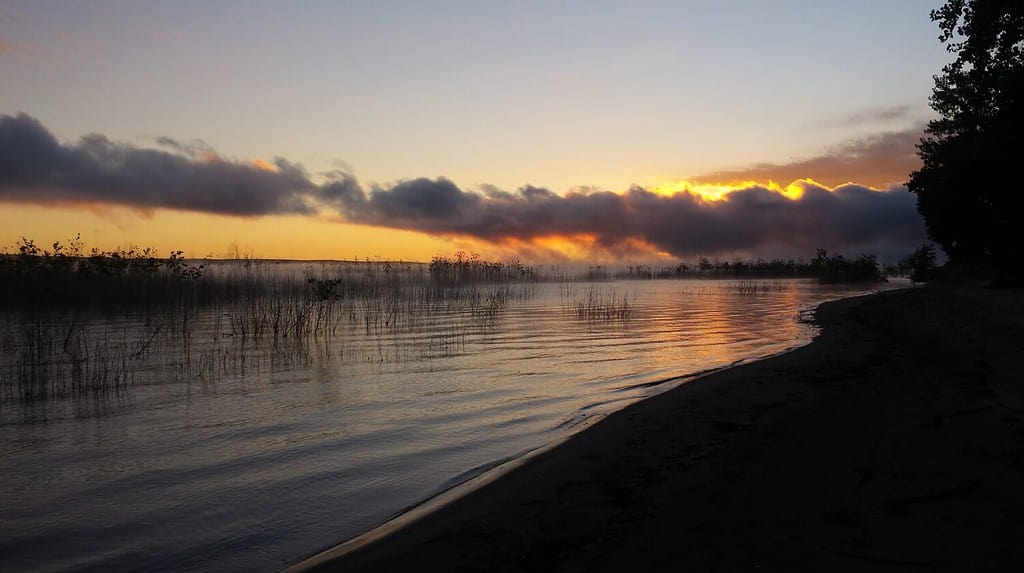Nestled along the banks of the Missouri River, Bellevue is a testament to Nebraska‘s rich history as well as the passage of time. Since its origins trace back to 1822, Bellevue, therefore, holds the esteemed title of being the oldest town in Nebraska.

Exploring the History of Bellevue, Nebraska
The story of Bellevue is deeply interwoven with the pioneering spirit of the American West. Founded in 1822 by fur trader Joshua Pilcher, Bellevue initially served as a fur trading post. It also established itself as a vital point along the Missouri River for trading goods and interacting with the indigenous Omaha tribe. The town’s name, “Bellevue,” was chosen for its French origins. It translates to “beautiful view,” a fitting descriptor for the stunning vistas that greeted early settlers.
As the 19th century unfolded, Bellevue also played a pivotal role in shaping the region’s history. It served as the territorial capital of Nebraska from 1855 to 1857. This was a period during which the town flourished as a hub of governance and commerce. The establishment of military forts, such as Fort Atkinson and later Fort Crook, further solidified Bellevue’s significance as a strategic military outpost. This is because it helped protect the expanding western frontier. Over the years, Bellevue evolved from a fur trading post into a thriving community.
The town has also witnessed the ebb and flow of the nation’s historical narrative. These include the westward expansion, the Civil War, and the changing dynamics of the American Midwest.

The Bellevue Log Cabin is the oldest house in Nebraska.
Geographical Significance of Bellevue, Nebraska
Situated in eastern Nebraska, Bellevue occupies a prime location that blends riverfront beauty with proximity to urban centers. The town is positioned within Sarpy County, which neighbors the city of Omaha. The presence of the Missouri River has been instrumental in Bellevue’s historical and geographical identity. It acts as a lifeline for trade, transportation, and connectivity. The town’s elevation above the river provides residents and visitors with panoramic views. Therefore, these only echo the sentiment of its name—beautiful views that stretch across the horizon.
Today, Bellevue seamlessly merges its historical charm with modern amenities, showcasing a balance between preserving its heritage and embracing progress. The town’s location places it within the Greater Omaha Metropolitan Area. Thus, this offers residents access to a myriad of cultural, educational, and recreational opportunities.

Nebraska is one of the states with a lot of historic significance in the central part of North America.
©RUSSELL TEBBS/Shutterstock.com
Where Is Bellevue Located on a Map?
The town of Bellevue sits on the south side of the greater Omaha metropolitan area. The Missouri River sits to the east of Omaha, and beyond that sits the state border with Iowa.
Wildlife You’ll Find in Bellevue
The natural surroundings of Bellevue are inhabited by an array of wildlife species that thrive in Nebraska’s diverse ecosystems. As you venture through the town’s environs, you’re likely to encounter a variety of creatures, both avian and terrestrial.
Bellevue, Nebraska as a Birdwatcher’s Paradise
Bellevue’s location along the Missouri River flyway renders it an ideal destination for bird enthusiasts. The river’s fertile banks attract a plethora of migratory birds, making Bellevue a haven for birdwatching. It has both majestic bald eagles soaring through the sky while the warblers nestled in trees sing delicate songs. This avian diversity is a testament to the town’s proximity to crucial bird migration routes.
Whitetail Deer: Graceful Inhabitants of Bellevue, Nebraska
The woodlands and open spaces around Bellevue also provide a habitat for whitetail deer, which are graceful creatures that roam the forests and fields. Residents and visitors might catch glimpses of these animals, which are often spotted during dawn or dusk as they forage for food.

Whitetail deer are common in the landscapes of Nebraska.
©Jim Cumming/Shutterstock.com
Eastern Cottontail Rabbits
Eastern cottontail rabbits are also a common sight in the suburbs of Bellevue. These small mammals, characterized by their fluffy white tails and large hind legs, go around the town’s green spaces and residential areas, connecting the wildlands to the urban.
Raccoons and Opossums
As twilight falls, raccoons and opossums also emerge from their hiding places to explore Bellevue’s neighborhoods. These nocturnal creatures, with their resourcefulness and adaptability, have found niches within urban environments. Like the cottontail rabbits, they offer glimpses of the wild amidst the familiar.
Coyotes
The yips and howls of coyotes echo across the prairies near Bellevue. These remind us of the region’s untamed spirit. These adaptable predators navigate the open spaces, highlighting the dynamic relationship between human settlements and the untamed wilderness.
Final thoughts
Bellevue, the oldest town in Nebraska, thus stands as a living testament to the history of the country and the harmony between humanity and nature. Its founding in 1822 marks the beginning of a story that weaves through centuries, demonstrating the ebb and flow of life along the Missouri River.
As the town continues to evolve, it remains rooted in its historical legacy as well as embraces the wonders of its natural surroundings. Bellevue invites us to explore the convergence of history, geography, and thriving ecosystems through the stunning river views that captivated early settlers and the wildlife that roamed its forests and fields. All of these make this town a cherished part of Nebraska’s identity.
The photo featured at the top of this post is © Jacob Boomsma/Shutterstock.com
Thank you for reading! Have some feedback for us? Contact the AZ Animals editorial team.







